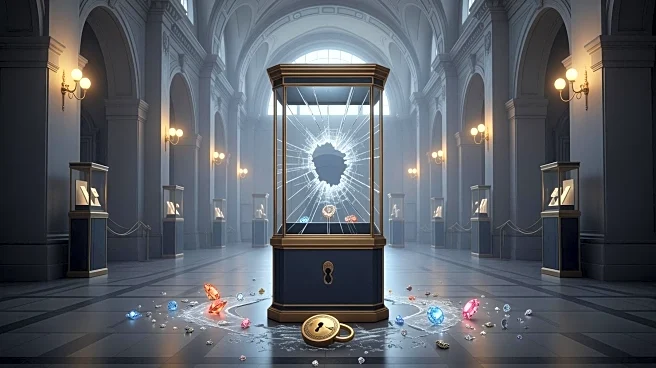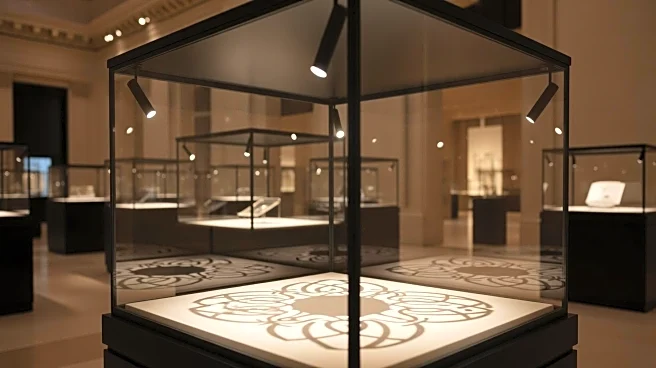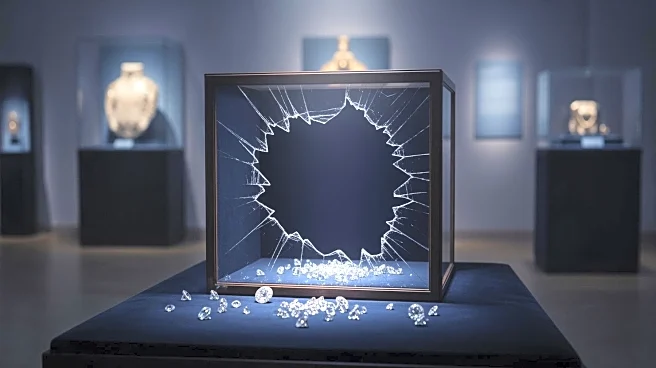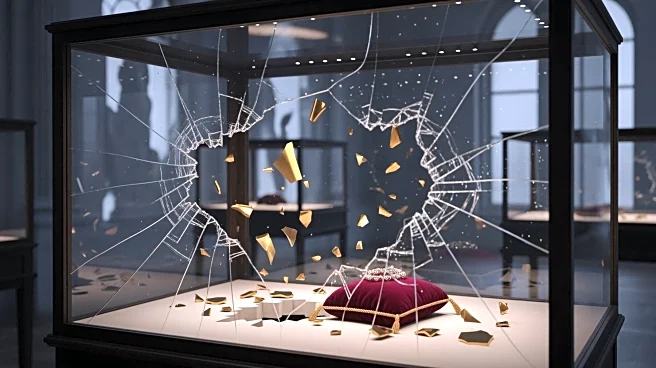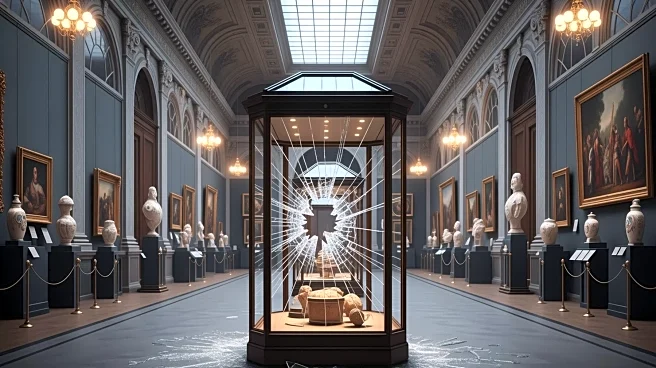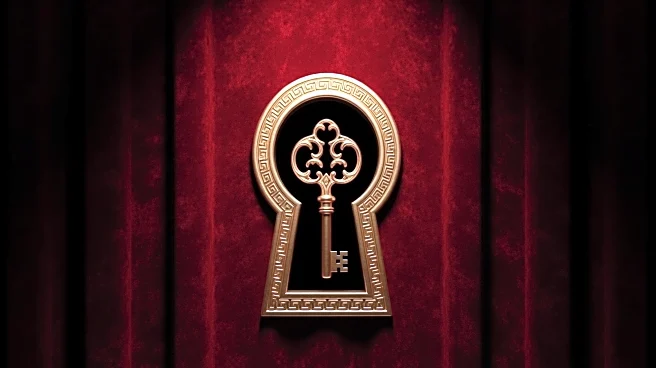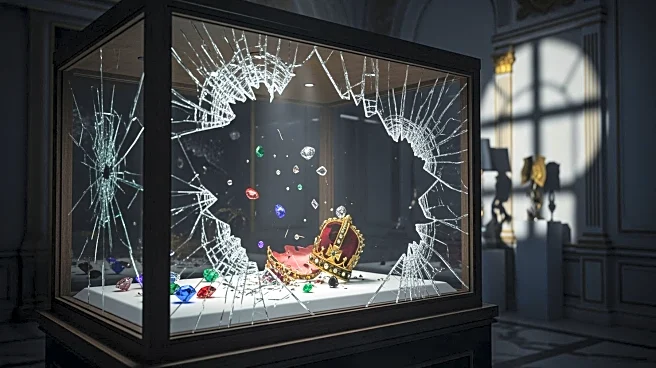What's Happening?
The Louvre Museum in Paris was forced to close after a team of thieves executed a daring heist, stealing eight priceless pieces of jewelry from the Galerie d'Apollon. The robbery took place shortly after the museum
opened, with the thieves using a crane to access the building and power tools to breach display cases. The stolen items include jewelry sets linked to French royalty, such as Queen Marie-Amélie and Empress Eugénie. French authorities are actively searching for the four-man team responsible for the heist, which has been described as highly professional and executed without violence.
Why It's Important?
The theft at the Louvre is a significant cultural and security breach, highlighting vulnerabilities in the protection of national treasures. The incident has drawn attention to the security challenges faced by major museums, particularly in managing large crowds and ensuring the safety of valuable collections. The heist could have implications for the museum's reputation and visitor numbers, as well as prompt a reevaluation of security measures at cultural institutions worldwide. The theft also has political ramifications, with criticism directed at the French government for failing to safeguard cultural heritage.
What's Next?
French authorities are conducting a comprehensive investigation, including reviewing surveillance footage and examining the crime scene. The government has pledged to enhance security at the Louvre, which may involve upgrading technology and increasing staff. The recovery of the stolen items remains a priority, although experts warn that such jewels are often altered to avoid detection. The incident is likely to lead to broader discussions about museum security and the balance between accessibility and protection of cultural assets.
Beyond the Headlines
The heist raises broader questions about the role of museums in preserving cultural heritage and the ethical considerations of displaying valuable artifacts. The incident may prompt a reevaluation of how museums balance public access with the need to protect their collections. Additionally, the theft highlights the challenges of securing large, complex institutions and the potential need for innovative security solutions. The event also underscores the importance of international cooperation in recovering stolen cultural property.
